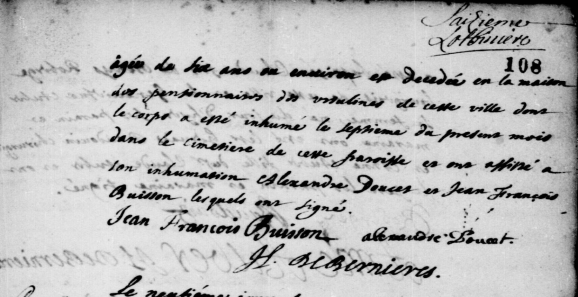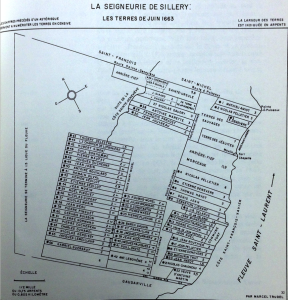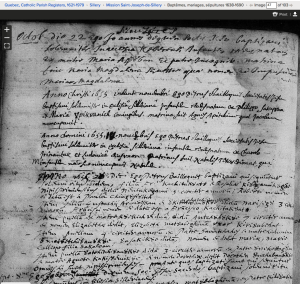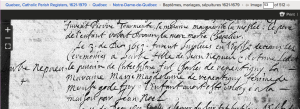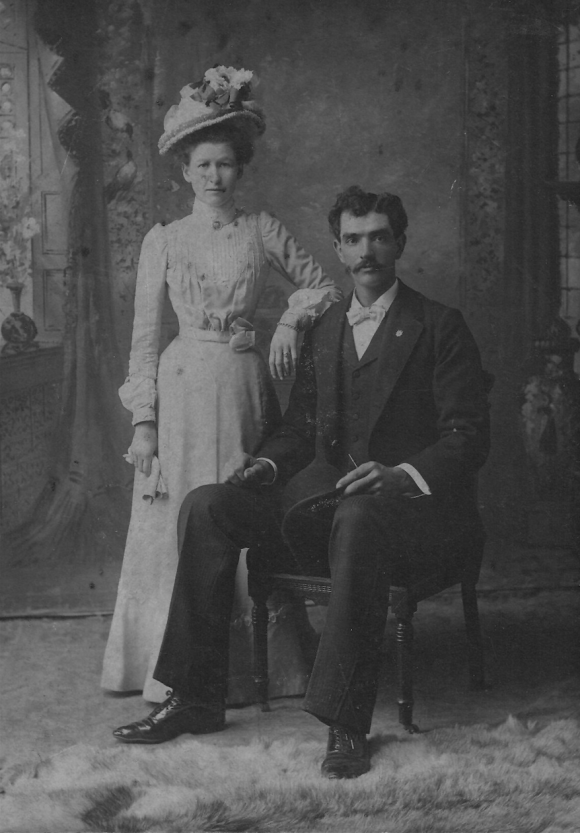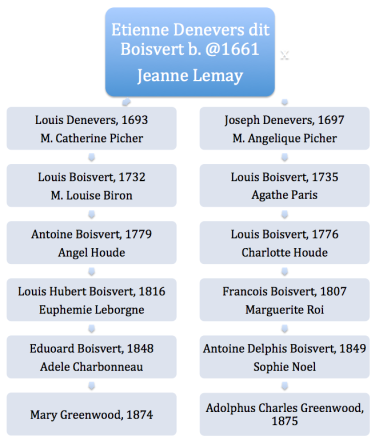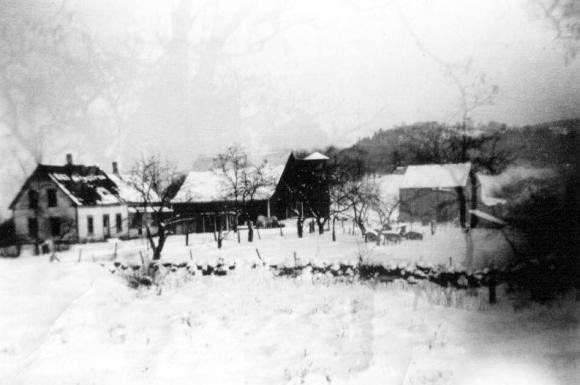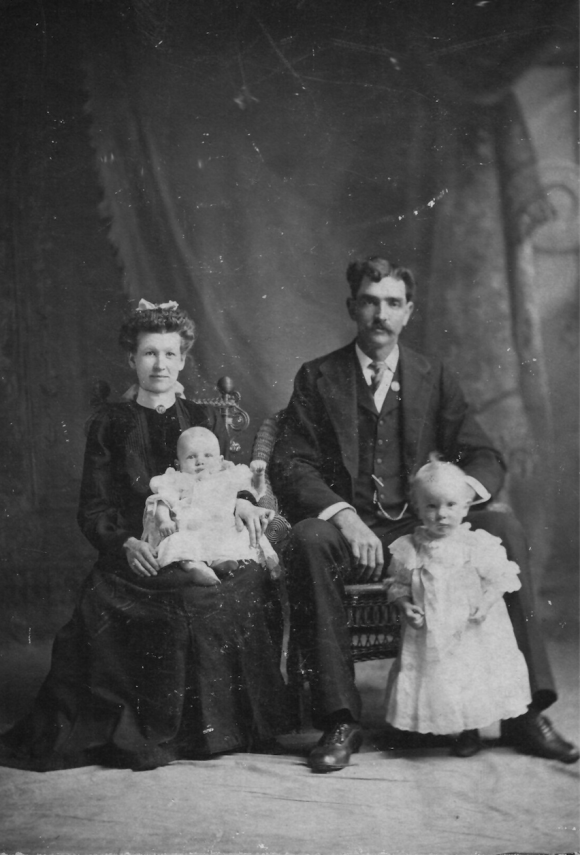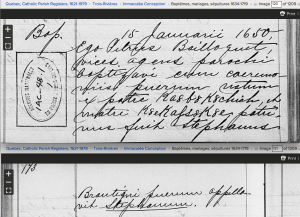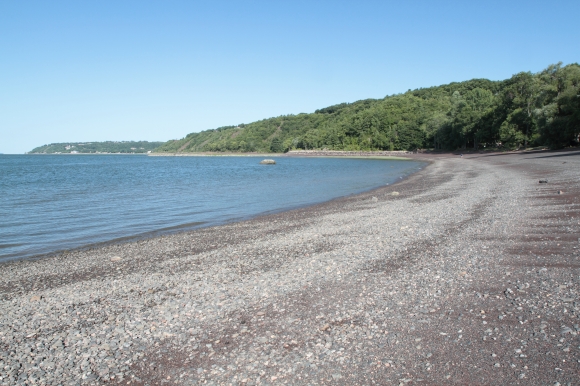
The beach of Plage Jacques Cartier and the cliffs of Cap-Rouge. By Cephas (Own work) via Wikimedia Commons
I imagined this blog post would be a whole different story. I thought it would be about lightning striking twice.
But it turns out that records are contradicting themselves and I don’t know what is going on.
What I thought I found out:
I thought I discovered that almost 7 years to the day that Pierre Gareman dit Le Picard and his son Charles were captured by the Iroquois, so was Pierre’s wife, Madeleine Charlot.
On the same day [that Father Mercier returned to the Beaupre mission], the fifth [of June 1660], a Canoe of 8 iroquois, or rather yroquoised Hurons, carried off picar’s wife, with 3 Children, at the petit Cap. They were discovered on the same Day, at 10 o’clock at night, while they were passing point de Levi, by about 20 Montagnais or Algonquains, accompanied by 8 frenchmen. The woman was dangerously wounded. Of the 8 iroquois, 3 were drowned and 5 brought in alive; of these, 3 were burned here, one was given to 3 rivers, and the other was spared his life. ~ Jesuit Relations, volume 45, page 155, 157
It makes sense to assume “picar’s wife” is Madeleine Charlot.* There were no other known Picars in Cap Rouge or Sillery (I checked the 1666 census.) Plus Pierre and Madeleine’s three adult Gareman daughters lived in Cap Rouge or Sillery – so it would be likely that their mother remained near. And while it was rare to hear a woman called by her husband’s name at the time, Pierre was rather famous for his capture and there was the continued effort for the return of their son Charles – so it could make sense in this instance that naming conventions were defied.
This find felt like a win. A new twist in an old story.
And then I ran into Pierre and Madeleine’s youngest daughter’s marriage record. Many believe that this record indicates that Madeleine Charlot was already dead by January 29, 1652 when Mathurin Trut and Marguerite Gareman married.

The marriage record of Mathurin Trut and Marguerite Gareman, January 29, 1652, Notre-Dame-de-Quebec. Drouin Collection.
It all hinges on whether you see the words “et de” (and of) or “et feu” (and the late) before Madeleine’s name.**

A close-up of the relevant end of the fourth line.
Honestly, it looks like “et feu” to me.
But still I am holding out hope – not that Madeleine suffered grave injuries at the hands of the Iroquois, but for what promises to be a more complicated story.
UPDATE: Reader Jhoguecorrigan pointed out in the comments that there there was another family of Picards near Beauport that claims the 1660 capture story. There are links here, here, and here.
*Source Note: I am reading the English translation of Jesuit Relations edited by Reuben Gold Thwaites in the 19th century online through the Internet Archive. The index assumes that picar’s wife and Madeleine Charlot are the same woman too.
**Thank you! To FM, and especially, SG on the Facebook Genealogical Translations page. Thanks for helping me make sense of this scrawl!


